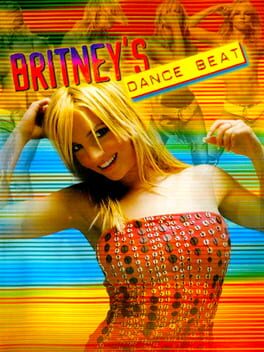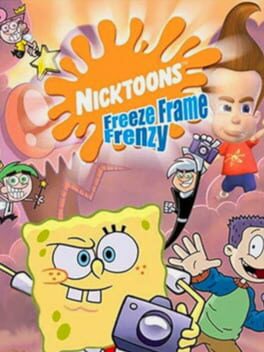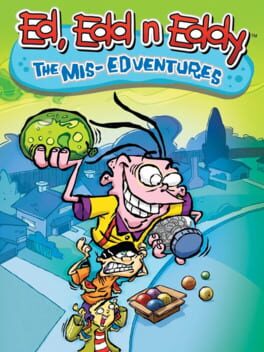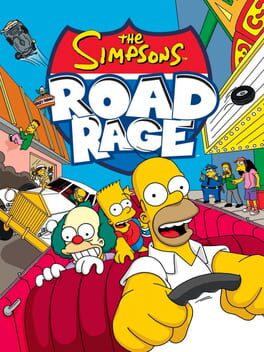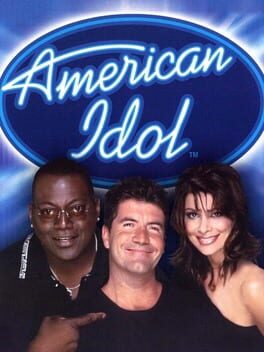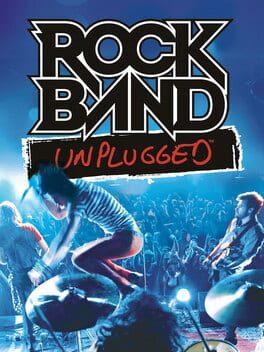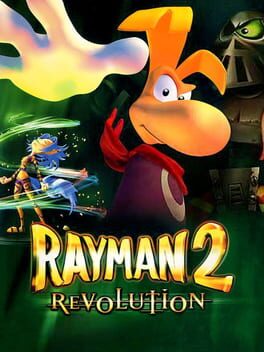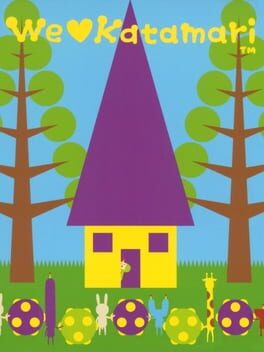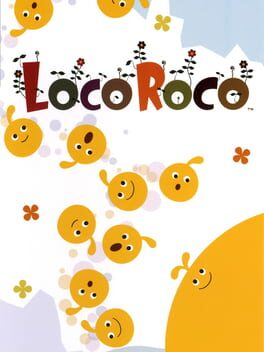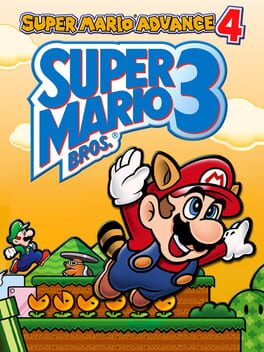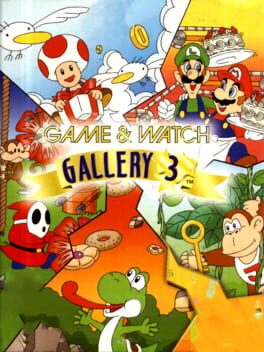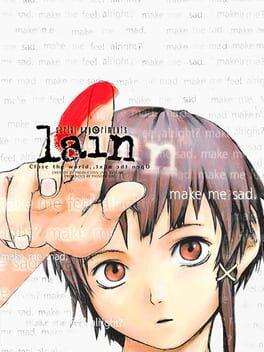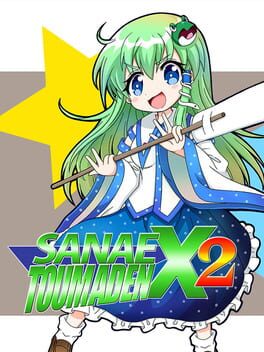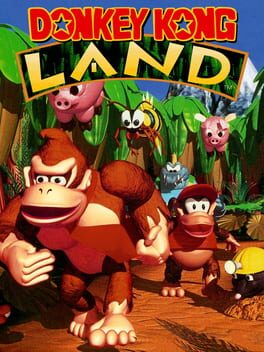BansheeNeet
BACKER
I think the greatest sin of the NSMB games is that they've "flattened" people's perception of what the 2D Mario games were/can be. Believe it or not, games like SMB3 and SMW didn't limit themselves to just "grass world, desert world, ice world, water world", and even when they did use those tropes, they didn't depict them exactly the same way. Those games didn't just have an overworld map, SMB3 had essentially a board game with moving pieces that was catered perfectly to competitive playthroughs, and provided variety between levels. SMW's map was less varied, but told a story through the way you progressed through a detailed map with detours and distinct sections that all made sense in how they were all a part of one specific location. Even SMW has more than just one 1-up minigame. These games had distinct personalities, different aesthetics and inspirations, and the NSMB series serves to get everything in one perfect line. This is what Nintendo would have you believe Mario has Always Been and Always Will Be, which is why it seems projects like Super Nintendo World and the Illumination Mario Movie seem to borrow a lot from these games.
There are some actually good ideas for Mario levels here, some joy is to be had in terms of providing good, reliable 2D Mario platforming. Honestly, I wouldn't go all the way to say this is a bad game. But it seems to actively try to be unremarkable the whole time. The game's marketing revolves around "look at AAALLLL the COOOIIIIINS" but I'll be honest, there's a lot of them but not THAT many. Not enough to hang your entire game on. Also the raccoon leaf is here, P-meter and all, no real reason, it's just here because they need something here, god forbid they come up with an actual new power-up. Like I said, there's genuinely good levels and moments in this game, but it's not worth it.
One last thing: this game tries not to be too hard in terms of level design, which is fine, but it tries to make up for that by making some of the collectibles absurdly difficult to find, usually involving assumptions I would never make on my own. I guess that's also not a bad thing, just slightly exhausting. Glad I never got tricked into actually buying this game at any point. Did you know it's very easy to hack your 3DS?
There are some actually good ideas for Mario levels here, some joy is to be had in terms of providing good, reliable 2D Mario platforming. Honestly, I wouldn't go all the way to say this is a bad game. But it seems to actively try to be unremarkable the whole time. The game's marketing revolves around "look at AAALLLL the COOOIIIIINS" but I'll be honest, there's a lot of them but not THAT many. Not enough to hang your entire game on. Also the raccoon leaf is here, P-meter and all, no real reason, it's just here because they need something here, god forbid they come up with an actual new power-up. Like I said, there's genuinely good levels and moments in this game, but it's not worth it.
One last thing: this game tries not to be too hard in terms of level design, which is fine, but it tries to make up for that by making some of the collectibles absurdly difficult to find, usually involving assumptions I would never make on my own. I guess that's also not a bad thing, just slightly exhausting. Glad I never got tricked into actually buying this game at any point. Did you know it's very easy to hack your 3DS?
2002
Honestly not too bad of a time. My biggest gripe is that since this is so early in Britney's career, there's only 5 songs to play, and the main mode basically makes you play through shortened versions of those, then the full versions. Surely we could've waited a year so that Toxic could be on this, right? The actual rhythm game is basic, but fun in the fact that it's built around two-player, and you can throw tougher notes into the other player's field by doing better than them. All the art, menu music, and fashion is extremely of its time, and that's exactly what you want with a game titled Britney's Dance Beat.
The GBA version is basically a much more stripped-down, boring, and uglier version of the same game, would not recommend that, but the PS2 version is a fun curiosity to explore with friends.
The GBA version is basically a much more stripped-down, boring, and uglier version of the same game, would not recommend that, but the PS2 version is a fun curiosity to explore with friends.
Would be tolerable if the autoscrolling wasn't painfully slow. I like pointing at sprites on the screen and going "It's Guy from Cartoon!!" as much as the next guy but I felt myself falling asleep because of how long and slow levels are. Also too many Klasky Csupo freaks in this one, Nicktoons games should avoid these as much as possible.
Would be a pretty fun Crazy Taxi-like for the GBA if not for the fact that every destination is tucked away in some corner, requiring very precise braking in order to get into. It's so easy to end up circling around the destination over and over looking for a way to get in, a problem that Crazy Taxi simply doesn't have, or even the console version of this game for that matter. The missions are all decent fun as well as some of the other side modes but I just can't get over how fucked up the main mode is because of this one flaw.
2003
2009
Very fun decision of Harmonix/Backbone to revisit mechanics from Harmonix's first game, Frequency, in order to bring Rock Band to portables. Here, you switch between playing vocals, guitar, bass, and drums, using 4 buttons on the PSP. Every time you complete a successful sequence in one instrument, it begins to play itself automatically for a while, allowing you to go to another track. I think this is a great idea in terms of how to play a Rock Band with only controller buttons, even if remembering which button maps to which note can be tricky at first. It's like rhythm game resource management when songs get harder, having to decide where to go next, how to handle mistakes, and where to use your overdrive. I also really like how going to one track makes that part of the song louder, it genuinely makes the game an interesting analysis of each song and all its parts. This is a pretty basic observation, but you really don't realize how hard the bass carries a song until you play it yourself (and when you fuck up and it's no longer in a song). You can also feel how each different instrument has its own style of play through the structure of their tracks. Drum tracks are very recognizably rhythmic, and contrast with vocal tracks which are always highly melodic and always doing their own thing outside of the rest of the instruments. Again, a very basic observation but it's fun to have a game put thoughts like these at the front, playing long enough breaks down the formula of writing a rock song pretty well.
I played mostly on medium since drums on hard was always way too much for me to handle (drummers deserve some kind of medal I had no idea how scary it is being a drummer). Tour mode is also a little too repetitive, especially early on when there's only like 3-5 songs to switch between playing, and all the mechanics around making money or fans never really felt important to me. It's really mostly "play different songs or setlists until you unlock the next thing", which is fine for the pick-up-and-play style of gaming that portable games tend to have, but just not that substantive. But overall I was pretty happy to check this out, it's a good time. It also has Rock Your Socks by Tenacious D with all the swearing censored, but the "squeeze out a cleveland steamer on my chest" line still got through, great stuff.
I played mostly on medium since drums on hard was always way too much for me to handle (drummers deserve some kind of medal I had no idea how scary it is being a drummer). Tour mode is also a little too repetitive, especially early on when there's only like 3-5 songs to switch between playing, and all the mechanics around making money or fans never really felt important to me. It's really mostly "play different songs or setlists until you unlock the next thing", which is fine for the pick-up-and-play style of gaming that portable games tend to have, but just not that substantive. But overall I was pretty happy to check this out, it's a good time. It also has Rock Your Socks by Tenacious D with all the swearing censored, but the "squeeze out a cleveland steamer on my chest" line still got through, great stuff.
2000
Severely misguided attempt to add more structure to a game that was already structured just fine for what it was. Now there's an upgrade system, but you start off weaker than where you started off in the original version. There's an open world, but its horribly aimless and kills the mood of the original Hall of Doors, while also running worse than anything else in the game. Cutscenes and dialogue have been added to elaborate on plot points, except the game's story didn't really need elaboration so everything ends up getting explained twice while the mystery of the original is lost. Rayman 2 didn't have a hub world because it was all meant to feel like one continuous adventure, winding through different kinds of dark fantasy/steam punk-inspired environments while constantly being tailed by your enemy. The hub world here adds nothing, neither do the extra cutscenes, and while you have the option to switch to the original version's gibberish language, the game hides that option and doesn't save it when you quit, meaning most of the time you'll be hearing the much more boring version of the dialogue.
The biggest heartbreaker to me was you can no longer read the game's extensive lore, something you could originally access at any time in the original game. Rayman 2 on the N64 was my first experience playing a game where the world was wholly a mystery to me, and being able to read lore about all the characters being thousands of years old, and how each character was involved in creating the universe, it blew my child-mind. And none of it was ever even brought up in the story, it was the first time I could feel how huge the world of a game was, not through it having a literal huge map but by smartly implying it while going through the story. But Revolution is interested in removing all of that wonder, and makes sure that every element is as obvious as possible. And the game takes too damn long to load! I still enjoyed it to some extent because underneath all the bad changes it's still my beloved Rayman 2, but in no way is this the definitive version of the game, would never recommend this to be the way someone experience one of my favorite games.
The biggest heartbreaker to me was you can no longer read the game's extensive lore, something you could originally access at any time in the original game. Rayman 2 on the N64 was my first experience playing a game where the world was wholly a mystery to me, and being able to read lore about all the characters being thousands of years old, and how each character was involved in creating the universe, it blew my child-mind. And none of it was ever even brought up in the story, it was the first time I could feel how huge the world of a game was, not through it having a literal huge map but by smartly implying it while going through the story. But Revolution is interested in removing all of that wonder, and makes sure that every element is as obvious as possible. And the game takes too damn long to load! I still enjoyed it to some extent because underneath all the bad changes it's still my beloved Rayman 2, but in no way is this the definitive version of the game, would never recommend this to be the way someone experience one of my favorite games.
2005
The Sequel That Is About Being A Sequel is something I'm familiar with, but I didn't expect We Love Katamari to be one of these. The title itself is a statement that is certainly true for the fanbase, for many of the people who made it, and for anyone who made money off of it, but for creator Keita Takahashi, the title was more of a question that needed an answer. Do we love Katamari? Why? Do we want more Katamari? Do I want more Katamari?
The game opens by summarizing the events of the first game, declaring that Katamari Damacy was beloved by all, so of course there had to be a follow-up. But The King of All Cosmos, the flippant and prideful figure who caused the catalyst for the first game, doesn't really get it. He enjoys being beloved, and he'll gladly take any opportunity to boss the Prince and his cousins around, but when it comes down to it, he seems to want to do anything else besides play Katamari. He only does it for the sake of the humans who loved Katamari Damacy, or are curious about why people love it.
These humans, while at first expressing their love of Katamari, also are very demanding and petty. The player is used to being insulted by The King on their first try in any level, but sometimes the "fan" is even harsher, and even when you do pretty good, they still never fail to throw in something like "Yeah, you could do better, but I guess I'll settle for this." While I'm sure exceeding at every stage will get you more unqualified compliments, the average player will often disappoint these fans, or see would-be fans says something like "Is this was Katamari is? Doesn't seem that good to me." The game is constantly referencing the first game, as The Prince is working entirely in service of people who are only thinking of the first game. The cosmos are just fine, exactly as you left them at the end of the first game, The Prince and The King are only doing all this because they've been asked to, because they feel the need to prove themselves to any naysayers in the world.
The unbridled joy and fascination with the world that was present in Damacy is still here in the art, gameplay, design, and music, but We Love Katamari also has a surprising cynical streak that it never really relents from. In the end it kind of suggests that no sequel is entirely uncynical, that revisiting the well will never truly result in something just as good, but it also ends up being an extremely fucking solid sequel to Damacy that rivals it in quality. I love the gimmick levels in this game, like the one where you're moving super fast on a race track, or where you're trying to search for every paper crane in a level, there's so much creativity in the variety of level types. I don't think it ever surpasses the original like some people believe, but it's a strong as hell follow-up.
It ends up making We Love Katamari bittersweet, it's incredibly fun to play, but it's a game that believes being "as fun as the first" isn't enough, and therefore no sequel to Katamari Damacy will ever be worthwhile, even the one you're playing. It especially becomes a bummer when you check the Wikipedia page for the "Katamari Series" and see that there's been around 4 different mobile games since We Love Katamari, along with countless other entires with no involvement from Takahashi. We Love Katamari was his way of expressing gratitude to anyone who enjoyed Damacy, while also being his way of letting them know that it's OK to let Katamari go, and that he'll be the first to do so.
The game opens by summarizing the events of the first game, declaring that Katamari Damacy was beloved by all, so of course there had to be a follow-up. But The King of All Cosmos, the flippant and prideful figure who caused the catalyst for the first game, doesn't really get it. He enjoys being beloved, and he'll gladly take any opportunity to boss the Prince and his cousins around, but when it comes down to it, he seems to want to do anything else besides play Katamari. He only does it for the sake of the humans who loved Katamari Damacy, or are curious about why people love it.
These humans, while at first expressing their love of Katamari, also are very demanding and petty. The player is used to being insulted by The King on their first try in any level, but sometimes the "fan" is even harsher, and even when you do pretty good, they still never fail to throw in something like "Yeah, you could do better, but I guess I'll settle for this." While I'm sure exceeding at every stage will get you more unqualified compliments, the average player will often disappoint these fans, or see would-be fans says something like "Is this was Katamari is? Doesn't seem that good to me." The game is constantly referencing the first game, as The Prince is working entirely in service of people who are only thinking of the first game. The cosmos are just fine, exactly as you left them at the end of the first game, The Prince and The King are only doing all this because they've been asked to, because they feel the need to prove themselves to any naysayers in the world.
The unbridled joy and fascination with the world that was present in Damacy is still here in the art, gameplay, design, and music, but We Love Katamari also has a surprising cynical streak that it never really relents from. In the end it kind of suggests that no sequel is entirely uncynical, that revisiting the well will never truly result in something just as good, but it also ends up being an extremely fucking solid sequel to Damacy that rivals it in quality. I love the gimmick levels in this game, like the one where you're moving super fast on a race track, or where you're trying to search for every paper crane in a level, there's so much creativity in the variety of level types. I don't think it ever surpasses the original like some people believe, but it's a strong as hell follow-up.
It ends up making We Love Katamari bittersweet, it's incredibly fun to play, but it's a game that believes being "as fun as the first" isn't enough, and therefore no sequel to Katamari Damacy will ever be worthwhile, even the one you're playing. It especially becomes a bummer when you check the Wikipedia page for the "Katamari Series" and see that there's been around 4 different mobile games since We Love Katamari, along with countless other entires with no involvement from Takahashi. We Love Katamari was his way of expressing gratitude to anyone who enjoyed Damacy, while also being his way of letting them know that it's OK to let Katamari go, and that he'll be the first to do so.
2006
One of those games where you're better off playing the first world, going "well wasn't that delightful" and then putting the game down. Every level feels like the game has no new ideas to bring to the table, all the same tricks rearranged a couple times, maybe more spike balls in places. Also, if you're looking to collect everything in a stage, it not only requires never getting hit but also a lot of weirdly precise platforming. This is a game that should be putting vibes above all else, and yet for a game that only uses the shoulder buttons to move, it expects some quick reaction and precision, usually just so you can collect an item for a mode that, while fun, is ultimately not all that engaging. It also felt unclear what was the surefire way to defeat enemies, sometimes hitting them from under works but once in a while they'll stop you and eat one of your locoroco, same with going from above, the way the Moja work in this game doesn't feel fair compared to what's at your disposal.
It's a shame I came away feeling like this, because this is a game with a lot of delightful things. The locoroco themselves are adorable in both design and sound, each having their own theme and voice lines for specific things in levels. They all speak in a made up language, one meant to sound like several different languages at once, and every song they and the Mui Mui sing is incredibly charming and catchy. A game so poppy should be a lot more consistently exciting, or just shorter and more focused. Five worlds of levels was clearly too many for this team to fill.
Also, man, the design of the Moja sure is questionable, huh? And also the black locoroco sounding and looking like that. I mean, it was 2006, surely they could have avoided stuff like this. It's not a huge deal breaker, but it just feels like this one thing that taints this game's happy-go-lucky attitude, I don't buy it's positivity anymore. Because of this, it brings me no joy to admit the black locoroco's theme goes hard.
This feels like a project that started with the best of intentions, but just ended up getting bloated while also having nothing to fill all that bloat. It's best to be looked at from a distance, as there's nothing to be gained from getting closer to it.
It's a shame I came away feeling like this, because this is a game with a lot of delightful things. The locoroco themselves are adorable in both design and sound, each having their own theme and voice lines for specific things in levels. They all speak in a made up language, one meant to sound like several different languages at once, and every song they and the Mui Mui sing is incredibly charming and catchy. A game so poppy should be a lot more consistently exciting, or just shorter and more focused. Five worlds of levels was clearly too many for this team to fill.
Also, man, the design of the Moja sure is questionable, huh? And also the black locoroco sounding and looking like that. I mean, it was 2006, surely they could have avoided stuff like this. It's not a huge deal breaker, but it just feels like this one thing that taints this game's happy-go-lucky attitude, I don't buy it's positivity anymore. Because of this, it brings me no joy to admit the black locoroco's theme goes hard.
This feels like a project that started with the best of intentions, but just ended up getting bloated while also having nothing to fill all that bloat. It's best to be looked at from a distance, as there's nothing to be gained from getting closer to it.
Honestly pretty good port of Super Mario Bros 3, and was fun to revisit with all it's GBA-ness: the constant voice samples, the crunchy audio, Mario Bros is there, it's fun to see this on an official modern Nintendo service. I came here to check out the notorious e-reader levels, but ended up just playing through the game because Super Mario Bros 3 is neat. But I ended up coming out of it a lot more mixed on SMB3. I remembered this game being harder than 2 (USA) or World, but I didn't remember levels feeling so...sloppy. Some of them are weirdly short, or have obstacles and enemies just placed on top of a mostly flat level, there are way too many maze levels, levels can be weirdly cruel in a way that feels off. The power-ups, while a lot of them cool in design and concept, often either only exist to skip entire levels or feel like they're not utilized in levels enough to make them that exciting. It's stuff like the Hammer Bros suit not being able to break bricks, or Kuribo's Shoe being in only one short level. It feels like the team was solely focused on making a Bigger game with More Stuff, but ended up losing sight of making levels that feel as well crafted as 1 or 2.
At the same time, I forgot how much multiplayer in this game rules. Many games have borrowed SMB3's world map, but very few actually realize that it's modeled after a board game for a reason. Players 1 and 2 take turns capturing levels, while also having the ability to challenge a player's space at any time. They can race to bonus games and power-ups and use items found from roaming enemies to get ahead of the other player on the map. SMB3 not having a save feature in its original release probably makes getting through a whole game like this a lot more challenging, but later versions adding a save file allows it to be the most exciting of the side-scrollers to go through with a friend, even rivaling the New Super Mario Bros series despite not having simultaneous play.
But what about the e-reader levels? Well, I didn't like them! They lean in even more into SMB3's difficulty and have even more mazes, and while even with my frustrations I was still able to finish the main game, I couldn't get more than 20 levels into this mode. Some levels manage to have fun gimmicks, and there's somewhat of a thrill seeing an official Mario game break away from the level design formula Nintendo has insisted on for decades now, but these levels weren't fun to me. Nowadays, with save-states, the NES SMB3 is probably still my favorite of any version, as the All-Stars/Advance version removes everything unique about that game's use of color and art-style, so this version kind of has no use to me, but I appreciate Nintendo seeing that this is still worth bringing over, and I hope they do so for the rest of the Super Mario Advance series. They have their idiosyncrasies, they get weird in a lot of places, the original version will always be there so why not? This is the end of the review now, I can't think of an ending sentence, goodbye.
At the same time, I forgot how much multiplayer in this game rules. Many games have borrowed SMB3's world map, but very few actually realize that it's modeled after a board game for a reason. Players 1 and 2 take turns capturing levels, while also having the ability to challenge a player's space at any time. They can race to bonus games and power-ups and use items found from roaming enemies to get ahead of the other player on the map. SMB3 not having a save feature in its original release probably makes getting through a whole game like this a lot more challenging, but later versions adding a save file allows it to be the most exciting of the side-scrollers to go through with a friend, even rivaling the New Super Mario Bros series despite not having simultaneous play.
But what about the e-reader levels? Well, I didn't like them! They lean in even more into SMB3's difficulty and have even more mazes, and while even with my frustrations I was still able to finish the main game, I couldn't get more than 20 levels into this mode. Some levels manage to have fun gimmicks, and there's somewhat of a thrill seeing an official Mario game break away from the level design formula Nintendo has insisted on for decades now, but these levels weren't fun to me. Nowadays, with save-states, the NES SMB3 is probably still my favorite of any version, as the All-Stars/Advance version removes everything unique about that game's use of color and art-style, so this version kind of has no use to me, but I appreciate Nintendo seeing that this is still worth bringing over, and I hope they do so for the rest of the Super Mario Advance series. They have their idiosyncrasies, they get weird in a lot of places, the original version will always be there so why not? This is the end of the review now, I can't think of an ending sentence, goodbye.
The reason I played this is because it was made available on Nintendo Switch Online. Now, I'm not stupid. Okay, having an NSO sub is kind of stupid, but ignore that for now. I know that there are endless different ways to play old games for free. I have multiple different programs and modded consoles for this exact purpose. Right now, if I wanted to, I could play literally any Game Boy game I wanted to on my PC or my Vita or my 3DS. But if there's one thing that a subscription service can be useful for, it's curation. Very little subscription services actually do this, and Nintendo definitely doesn't always do it well, but it can make all the difference to have a service actually care about what it's providing to the user. A lot of times I stare at a giant list of ROMs on my PC to play and end up playing nothing, sometimes I need someone to tell me "well why don't you play one of these games" and Nintendo did that. I probably would have never given the Game and Watch Gallery games a shot because from the outside they seem to just be what the title says, compilations of old Game & Watch games, probably not anything all that engaging. But now, I think I need to play all of these games.
You know how people talk about graphics peaking at the PS2 and everything afterwards being unnecessary? I think I'm becoming that person but specifically in regards to pixel art and the GBC. I adore the look of this game, the colors are so vibrant and the pixel art is all incredibly expressive and detailed while working within the limitations of the system. This not only makes for a great looking game, but one that can also showcase how expressive the original LCD games managed to be despite being made up of a very limited amount of still images. That also extends to how they play. Each minigame, while having a simple premise, has a lot little nuances, ways to get bonus points, ways each one encourages you to take more risks while always keeping the player engaged and changing things up. The best minigames in this collection are the ones that are essentially spinning plates: having to maintain multiple parts of the screen, having the player constantly switch their attention to different parts of it and punishing them for being negligent to any part of the minigame. Mario Bros and Greenhouse are the stand outs for this reason, and it makes sense since their classic versions are already great as well (Greenhouse Classic even has more score bonus opportunities than the modern version). The other minigames are mostly good, thought I'd argue Egg and Turtle Bridge have better classic versions, and Donkey Kong Jr feels like an even more ungraceful version of the arcade game, so it's better to just leave that one alone.
Where this game is more consistent is in its soundtrack. In a game that encourages playing each minigame up to the score limit, the music better be good enough to be listened to over and over again, and it most certainly is here. No track slacks, and it's nearly all original stuff as far as I can tell, so it doesn't really on playing the usual Mario fare either. This game also does a great job at providing context for these Game and Watch games, and helping the player appreciate them more than they would if just handed a boring port of the original, something a lot of game compilations fail to do. There's a museum with light trivia, but I mean more in the way that the modern versions of these games highlight what was already great in them, and so going back to the classic version doesn't feel like a downgrade so much as just another way to play. It helps the player see why these LCD games were popular, what made them stand out as games, it gives them value that could be lost if you engaged with them outside of this compilation.
This game was such a surprise, I never would have guessed how fun I found this. Hey, if you have an NSO sub, this is worth checking out, and hopefully they add more to the service. Or I mean, I could just go play them right now myself. Or play literally anything ever, actually. Or I could just sink more time trying to get all five stars in Greenhouse. Life is full of decisions, is the lesson here today.
You know how people talk about graphics peaking at the PS2 and everything afterwards being unnecessary? I think I'm becoming that person but specifically in regards to pixel art and the GBC. I adore the look of this game, the colors are so vibrant and the pixel art is all incredibly expressive and detailed while working within the limitations of the system. This not only makes for a great looking game, but one that can also showcase how expressive the original LCD games managed to be despite being made up of a very limited amount of still images. That also extends to how they play. Each minigame, while having a simple premise, has a lot little nuances, ways to get bonus points, ways each one encourages you to take more risks while always keeping the player engaged and changing things up. The best minigames in this collection are the ones that are essentially spinning plates: having to maintain multiple parts of the screen, having the player constantly switch their attention to different parts of it and punishing them for being negligent to any part of the minigame. Mario Bros and Greenhouse are the stand outs for this reason, and it makes sense since their classic versions are already great as well (Greenhouse Classic even has more score bonus opportunities than the modern version). The other minigames are mostly good, thought I'd argue Egg and Turtle Bridge have better classic versions, and Donkey Kong Jr feels like an even more ungraceful version of the arcade game, so it's better to just leave that one alone.
Where this game is more consistent is in its soundtrack. In a game that encourages playing each minigame up to the score limit, the music better be good enough to be listened to over and over again, and it most certainly is here. No track slacks, and it's nearly all original stuff as far as I can tell, so it doesn't really on playing the usual Mario fare either. This game also does a great job at providing context for these Game and Watch games, and helping the player appreciate them more than they would if just handed a boring port of the original, something a lot of game compilations fail to do. There's a museum with light trivia, but I mean more in the way that the modern versions of these games highlight what was already great in them, and so going back to the classic version doesn't feel like a downgrade so much as just another way to play. It helps the player see why these LCD games were popular, what made them stand out as games, it gives them value that could be lost if you engaged with them outside of this compilation.
This game was such a surprise, I never would have guessed how fun I found this. Hey, if you have an NSO sub, this is worth checking out, and hopefully they add more to the service. Or I mean, I could just go play them right now myself. Or play literally anything ever, actually. Or I could just sink more time trying to get all five stars in Greenhouse. Life is full of decisions, is the lesson here today.
Having to be in a world with other people really is a horrifying thing. Sometimes things get so bad I wonder why we even bother trying to communicate with each other. It seems inevitable that we mess something up, say too much or too little, hurt people in ways we could never fathom. No amount of verbal or non-verbal communication could capture the ideas we truly believe in, it could never convey the nuances of our thoughts and perceptions, the principles we carry that guide our every decision. Wouldn't it be better if we all knew exactly what was going on in each other's minds? It sounds like a horrifying idea, but would it really cause more trouble than we already create? A network of people constantly connected, every detail of your life being taken in by anyone willing to join that network. Then you would see every version of yourself that exists in different people's minds. Wouldn't that be a relief? Or maybe it would drive you mad. Either way, why not give it a shot?
This game came out 2 months after the final episode of Serial Experiments Lain. Fans went into this expecting answers and got more than they would ever want to know.
This game came out 2 months after the final episode of Serial Experiments Lain. Fans went into this expecting answers and got more than they would ever want to know.
2022
Basically what it looks like, a kinda janky Touhou fangame that heavily pays tribute to the Mega Man X series. I bought this not realizing it was a sequel (I guess the fact that 2 is in the title should've tipped me off), but it doesn't really require that much understanding of what happened in the first game. You're basically Zero in this game, and have to go through several stages with a Classic Touhou Girl at the end to fight. This one specifically pays a lot of tribute to the PS1 entries in the series, using the X5 countdown scenario and X4 title cards for each boss, but just borrows from a lot of different iconic setpieces throughout the series. Like the X PS1entries, it's also pretty brutal in difficulty, with the added effect of the game not controlling very gracefully and bosses that can go on for a long time due to the low amount of damage you can deal. It also doesn't help that I've barely played any of the X series, only knowing what I know of it through watching other people play them because every time I've tried one I've been pretty bad at them. But as someone who's always curious about Touhou fangames, since they can be literally anything, I wanted to give this a try. It's very charming, the group behind it has a clear love of retro games and side scrollers in general, and the art is all fun as well. The main reason I bought this game though is the Steam description for it:
All stage is Rogue-unlike stage. Stage design by human.
Rogue-unlike upgrade system. Anything you get in stage will not lost.
Soul-unlike attack system. It don't have stamina limit. You can attack unlimited times if you like.
All stage is Rogue-unlike stage. Stage design by human.
Rogue-unlike upgrade system. Anything you get in stage will not lost.
Soul-unlike attack system. It don't have stamina limit. You can attack unlimited times if you like.
1995
The game's manual explains that, after the events of Donkey Kong Country, Cranky Kong claims that the only reason DKC was a success was it's use of George Wood Voice Silicon Graphics. Cranky then challenges DK and Diddy to once again save their banana hoard from King K Rool, but this time on the Game Boy. It's a genuinely funny explanation for why this game exists outside of just being a tie-in to what was becoming one of the SNES's most popular series, and it's also a cute little allegory to how Rare may have felt making this game. Could they actually manage to capture the spirit of DKC within the limits of a handheld 8-bit console? The result ends up being mostly a success, believe it or not.
Land has to make a couple of big compromises to get there, though. The smaller screen size isn't actually as much of a menace when it comes to getting killed by offscreen enemies, but what it does do is make Diddy and DK feel a lot slower and less capable. The rolling jump you can normally do off platforms in DKC is way harder to pull off due to it being a lot more finicky to get the right amount of acceleration for it. The Game Boy's smaller memory also means that when a level gets vertical, falling down often doesn't mean landing on a lower platform but instead immediately dying because whatever was down there simply isn't there anymore. The CG sprites of DKC on the Game Boy certainly don't look great, but their silllhouettes are readable enough that I never found it much of a problem to spot enemies and read level design (granted this is probably a lot easier to do on emulator). While these limitations definitely keep this from being as good of an experience as the original, what we have here is still a very competent and fun set of DKC levels.
None of the levels are really 1-to-1 with DKC, as this game was made more as a companion to DKC rather than a port. But the original levels here can be just as fun, as a good amount of the feel of the SNES game is retained here in enemy placement and the prioritization of keeping things kinetic as much as possible. Surprisingly, one of my favorite parts of this game ended up being the water levels, as they introduce some neat new enemy designs like a jellyfish that you can go under or over, each having its own distinct risk, or a nautilus that chases you through parts of a level. The water levels also have a new underwater temple setting, and in fact there are a lot of new settings for the game here, which help keep things varied on a console that requires a lot of clever reuse and tricks to get a game like this onto it. As for the music, well I guess it should be no surprise the geniuses behind the SNES soundtrack can also make those songs sound great on the Game Boy. The compositions here are slightly different from the SNES versions, but this is usually because the song decides to take advantage of the GB's sound rather than see it as a limitation, an opportunity to make something new. The original tracks in this song don't slack at all.
At its best, this game can manage to perfectly capture the feel of DKC, and it can feel like you were just given a whole new set of levels for the game you never knew about. But not only are there the limitations I mentioned before, but there are also just some stinker levels here. The levels that take place in the sky setting are almost all bad, as most of them require waiting on slow, small platforms while trying to avoid enemies. The second one, in which you can change the direction of the platform by jumping on it, is probably the worst level in any Donkey Kong game. It's slow, it's way too easy to fall off, jumping and landing on the platform in quick succession feels bad, and the problems with acceleration really hit when you have barely any land to run and jump off of. Also, sometimes it feels like this game gives you no hang time off cliffs whatsoever, whereas I feel like the console DKC games do a good job of giving you some slack when it comes to jumping off cliffs. I was expecting a lot more levels like these when I played this, but as I said, there's a lot of neat stuff in this game. It doesn't fully succeed in capturing everything that's great about DKC, and the level design isn’t nearly as fine tuned and elegant, but it ends up serving as a fun supplement to the original, I would recommend it if your fiending for more DKC and have overlooked this game in the past.
Land has to make a couple of big compromises to get there, though. The smaller screen size isn't actually as much of a menace when it comes to getting killed by offscreen enemies, but what it does do is make Diddy and DK feel a lot slower and less capable. The rolling jump you can normally do off platforms in DKC is way harder to pull off due to it being a lot more finicky to get the right amount of acceleration for it. The Game Boy's smaller memory also means that when a level gets vertical, falling down often doesn't mean landing on a lower platform but instead immediately dying because whatever was down there simply isn't there anymore. The CG sprites of DKC on the Game Boy certainly don't look great, but their silllhouettes are readable enough that I never found it much of a problem to spot enemies and read level design (granted this is probably a lot easier to do on emulator). While these limitations definitely keep this from being as good of an experience as the original, what we have here is still a very competent and fun set of DKC levels.
None of the levels are really 1-to-1 with DKC, as this game was made more as a companion to DKC rather than a port. But the original levels here can be just as fun, as a good amount of the feel of the SNES game is retained here in enemy placement and the prioritization of keeping things kinetic as much as possible. Surprisingly, one of my favorite parts of this game ended up being the water levels, as they introduce some neat new enemy designs like a jellyfish that you can go under or over, each having its own distinct risk, or a nautilus that chases you through parts of a level. The water levels also have a new underwater temple setting, and in fact there are a lot of new settings for the game here, which help keep things varied on a console that requires a lot of clever reuse and tricks to get a game like this onto it. As for the music, well I guess it should be no surprise the geniuses behind the SNES soundtrack can also make those songs sound great on the Game Boy. The compositions here are slightly different from the SNES versions, but this is usually because the song decides to take advantage of the GB's sound rather than see it as a limitation, an opportunity to make something new. The original tracks in this song don't slack at all.
At its best, this game can manage to perfectly capture the feel of DKC, and it can feel like you were just given a whole new set of levels for the game you never knew about. But not only are there the limitations I mentioned before, but there are also just some stinker levels here. The levels that take place in the sky setting are almost all bad, as most of them require waiting on slow, small platforms while trying to avoid enemies. The second one, in which you can change the direction of the platform by jumping on it, is probably the worst level in any Donkey Kong game. It's slow, it's way too easy to fall off, jumping and landing on the platform in quick succession feels bad, and the problems with acceleration really hit when you have barely any land to run and jump off of. Also, sometimes it feels like this game gives you no hang time off cliffs whatsoever, whereas I feel like the console DKC games do a good job of giving you some slack when it comes to jumping off cliffs. I was expecting a lot more levels like these when I played this, but as I said, there's a lot of neat stuff in this game. It doesn't fully succeed in capturing everything that's great about DKC, and the level design isn’t nearly as fine tuned and elegant, but it ends up serving as a fun supplement to the original, I would recommend it if your fiending for more DKC and have overlooked this game in the past.

